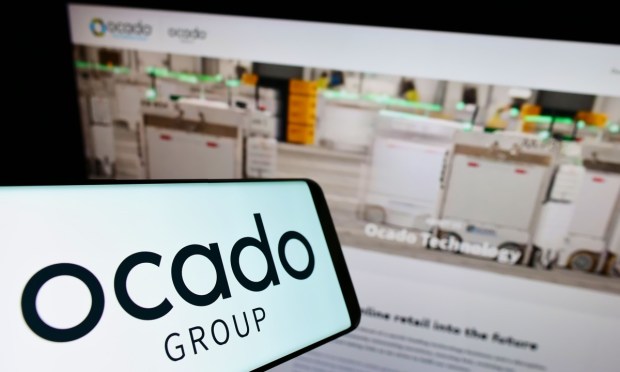
Ocado Group is applying its technology outside the online grocery space for the first time, making it the latest eGrocery company to expand beyond the category.
The eCommerce technology company, which has up until now operated primarily in the grocery category, announced Wednesday (Nov. 15) a deal to provide automated fulfillment technology to McKesson Canada, a leading healthcare provider and the largest pharmaceutical distributor in the country. This marks a significant shift for Ocado, as it ventures beyond its historic focus on grocery retail.
“Our technology is ideally suited to supply chains that require dense storage, highly accurate inventory management and secure stock control,” Ocado Group CEO Tim Steiner said in a statement. “lt has been proven over 20 years in one of the most complex supply chain environments, online grocery, and we’re now bringing our experience and IP to more sectors. We are very pleased to be expanding in Canada.”
Ocado is not the first eGrocery company to leverage its experience in the space to expand to additional categories. Instacart, for its part, has extended its reach far beyond grocery, entering categories ranging from pharmacy to beauty to general retail.
Similarly, restaurant eCommerce marketplaces have been expanding beyond restaurant categories, with leading players such as DoorDash and Uber Eats adding grocers and other retailers to their platforms.
These moves come as technology companies observe the links between consumers’ digital engagement across their various day-to-day routines. Increases in one area tend to lead to increases in others, according to data from the PYMNTS Intelligence study “How the World Does Digital: Daily Digital Engagement Hits New Heights.”
The study, which draws from a survey of more than 17,500 consumers in 11 markets that account for 50% of the world’s GDP, found for instance that a 10% increase in online shopping corresponds with a 7% rise in online grocery purchasing and a 6% uptick in digital restaurant engagement.
Ocado’s move to expand beyond the grocery category also comes as the company sees challenges growing its eGrocery penetration in the United States, a key market.
On the company’s last earnings call in July, Steiner noted that the United States has “a lot of growth to go” when it comes to the economics of online grocery, relative to comparable countries, but he maintained that someday eGrocery would be more profitable than brick-and-mortar.
“There’s a lot for [the U.S.] to learn and there’s changes they need to make on their own software front and stuff to drive the type of efficiencies that we would look for in other markets. But it is theoretically still the goal that those warehouses in the U.S. will generate higher EBITDA and higher PBT returns than the stores can.”
Indeed, online channels account for only a small share of total grocery purchases in the U.S. The PYMNTS Intelligence study “Tracking the Digital Payments Takeover: Catching the Coming eCommerce Wave,” created in collaboration with Amazon Web Services, which draws from an April survey of 2,700 U.S. consumers, finds that 87% of grocery transactions are carried out in stores, and only 12% occur online.